How to Build an Online Learning Platform: Essential Features and Steps

Key takeaways
-
In contrast to the chaotic and unsystematic whirlpool of knowledge, you can browse through on the Internet, e-learning platforms with professional pedagogues provide learners with a systematic approach to gaining knowledge, preserving all the conveniences of online interaction. That’s why, nowadays, e-learning platform development is so much in demand.
-
In this article, we will answer how to build an e-learning platform, consider its types and most popular examples like Udemy and Coursera.
-
We’ll also calculate how much such software development may cost.
-
Read about a real case of online platform development based on our own experience. So with a ring of a bell, let’s begin!
The present and future of e-learning platforms
The present situation of the e-learning platform testifies to the enormous potential of digital education for both startups and a wide range of users such as students, company staff, and learning enthusiasts. The proof of its business success reflects an e-learning market size that surpasses more than $200 billion at the time of 2019. At the same time, its popularity among users is illustrated by the statistics, saying that 77% of US companies use online platforms for staff training, whereby every dollar spent on such education returns in the amount of $30 in productivity.
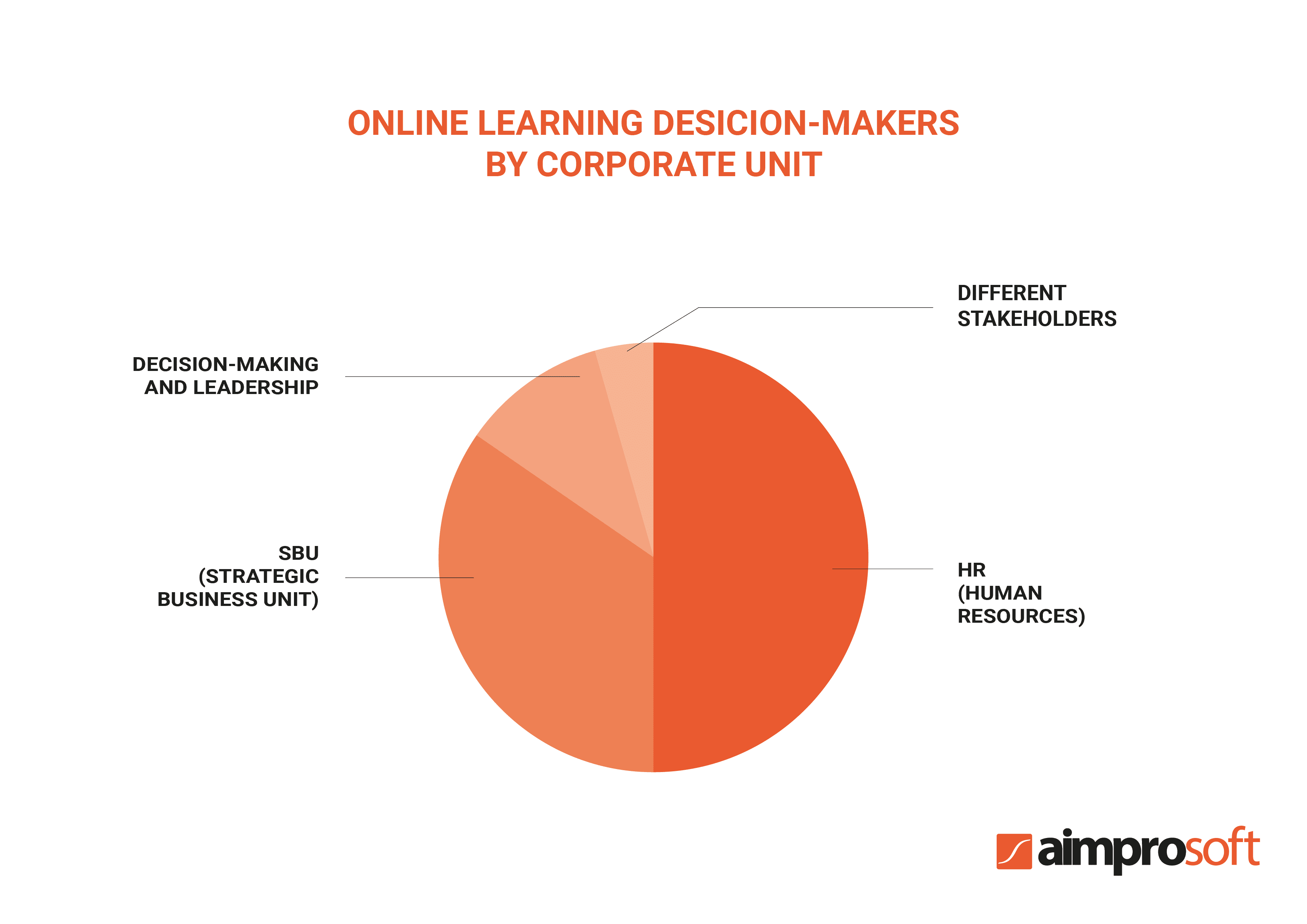
Experts look forward to the rapid elearning platform development in the next several years. For example, this market is expected to overcome $325 billion in 2025. The situation with the COVID-19 pandemic and massive self-isolation has once again proven education software’s relevance and enormous potential.
It is worth noting such main factors that will lead to industry development in the next 5 years:
- The gradual integration of online learning in the common teaching process;
- Increased popularity and distribution of applications which leads to a simpler and more convenient use of online education than ever before;
- The emergence of new learning opportunities thanks to the use of AR and VR technologies in educational applications;
- The increased role of the Internet, its distribution, and the number of Internet-enabled devices add to the availability and convenience of learning online.
After digging into the e-learning market’s future and current state, let’s shift our attention and explore educational platforms’ most prominent types.
Check out our article about e-Learning trends in 2021-2022Types of online learning websites
In more than 20 years of existence, many different types of e-learning platforms have come up. Let’s look at the main ones and find out the most beneficial options in terms of scale and functional capabilities for startups.
Learning Destination Sites
What is it? A site that offers many online courses in one place from different providers.
What is special about them? The traditional method of destination sites’ work includes the preparation of training material using the functionality provided by the site and subsequent uploading. The site is equipped with tools like eCommerce for managing financial actions, as well as other functionality for content authors.
Examples: Udemy, Coursera, eDX. In other words, the most advanced e-learning platforms belong to this type.
Traditional Learning Management Systems
What is it? Under traditional learning management systems, we mean the type in which the platform provides only the basic functionality necessary for conducting courses. Such systems focus mainly on staff training.
What is special about them? Instructors and content makers are entitled to create lessons, manage study material, report progress and performance, as well as many other administrative activities.
Examples: at the moment, the market for online courses has hundreds of learning systems providers, such as BlueVolt and CrossKnowledge.
Learn in full detail how to approach such a project
Learn moreOpen Source Learning Management System
What is it? As well as traditional ones, open source learning systems provide core functionality for hosting and building an elearning platform. However, they differentiate by being popular among all groups of users, not only corporate.
What is special about them? The difference is that this system type is usually free and customizable: source code can be freely viewed and modified in user interests. There are companies specializing in the customization of open source platforms.
Examples: the most typical ones are Moodle, Sakai, ILIAS.
Custom Built Learning Platform
What is it? A full custom solution allows creating an elearning platform, proceeding exclusively from the needs of your business. With the support of a software vendor, you can make an e-learning website that you imagined from scratch. The degree of realization depends only on your financial capabilities.
What is special about it? Being the most expensive solution, you will get exactly the product that you want, and only you will have full control over its advancement and future changes.
Examples: a striking example of a full custom learning solution is HBS, a Harvard Business School product.
Learning Management Ecosystems
What is it? A model in which the best-in-class point solutions are used and combined into one solution.
What is special about them? Such systems consist of many resources: educational software, assessment and e-commerce tools, e-learning engines, content management tools, all in a single platform. To make the impression of a unified system, learning ecosystems are often created with a custom frontend.
Examples: Adobe eLearning Suite is probably the most famous e-learning ecosystem. It contains a collection of all Adobe applications for educational purposes, including materials for designers, managers, developers, and others.
Top 3 most successful e-learning platforms
We will single out the top three online educational platforms among a whole lot of others on the market and learn what makes them successful so you can take advantage of this knowledge.
Udemy
From the very beginning of its foundation in 2010, the American e-learning platform Udemy aimed at the audience of students and adults. In its repository, there is an unprecedented number of courses (over 150,000) for the maximum possible number of subjects.
Each course is created personally by the teacher and may contain various multimedia elements and quizzes. Users can preview courses in real time or make a refund within 30 days from the date of purchase.
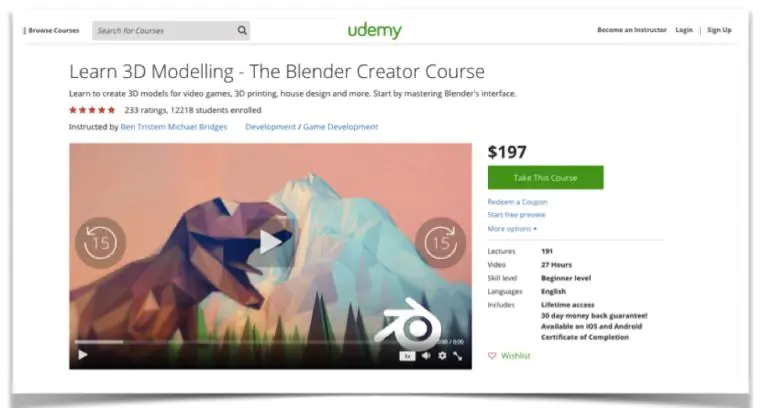
The cost of the courses varies greatly — you can find some on a similar topic for $20 and $200, depending on the amount of material, the professionalism of the instructor, and the awards for completion. Udemy works on a course-based pricing model, so it is suitable primarily for those who want to learn skills that can be gained through a specific course. It has a web and mobile (iOS/Android) version. As of 2020, Udemy has more than 50 million students and 57,000 teacher courses in over 65 languages.
If you want to build a website like Udemy, discover in our recent article a step-by-step guide to creating such an online course platform
Coursera
Coursera was founded by Stanford University professors in 2012. It was one of the first to focus on cooperation with renowned universities and the provision of academic courses, after which you can obtain certificates and even a University Degree.
In total, over 4,000 courses from 200+ universities and educational institutions are presented at Coursera. The price and study time differ from course to course, but the minimum price threshold starts at $39. Learning programs include video lectures, group, and practical exercises, as well as quizzes. Coursera has high-quality web and mobile versions.
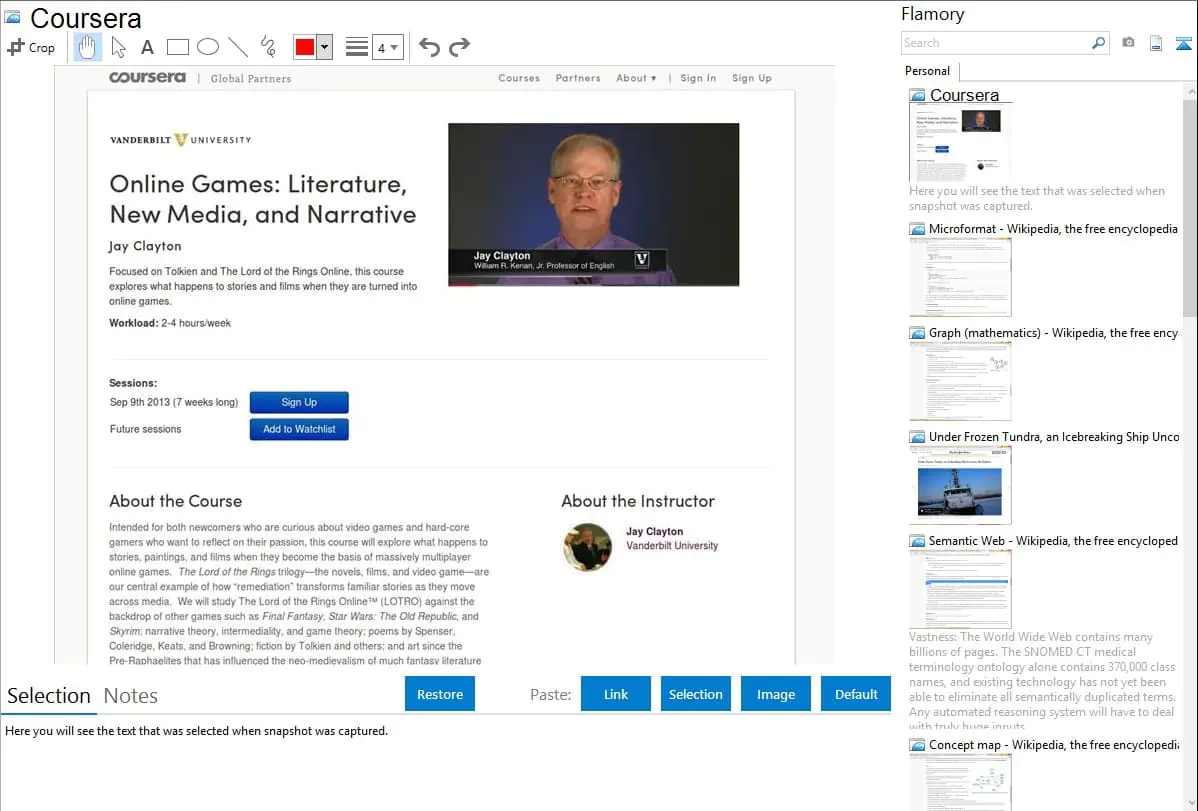
In 2018, Coursera earned $140 million, with 36 million registered users. At the time of 2019, this platform has been collaborating with partners from 29 countries, including public and private organizations.
Skillshare
This American online learning platform has offered education through the unusual format of video lessons since 2011. Such video-based courses consist of short lessons of no more than an hour.
Skillshare is a member-based platform: by subscription, users get access to all courses on the site. The standard subscription price is $8.25 per month. For businesses and students, there are separate options and pricing plans, such as a business plan for $99 a year. Also, Skillshare offers many free courses for those who want to try out video learning format and form an opinion if it is suitable for them or not.
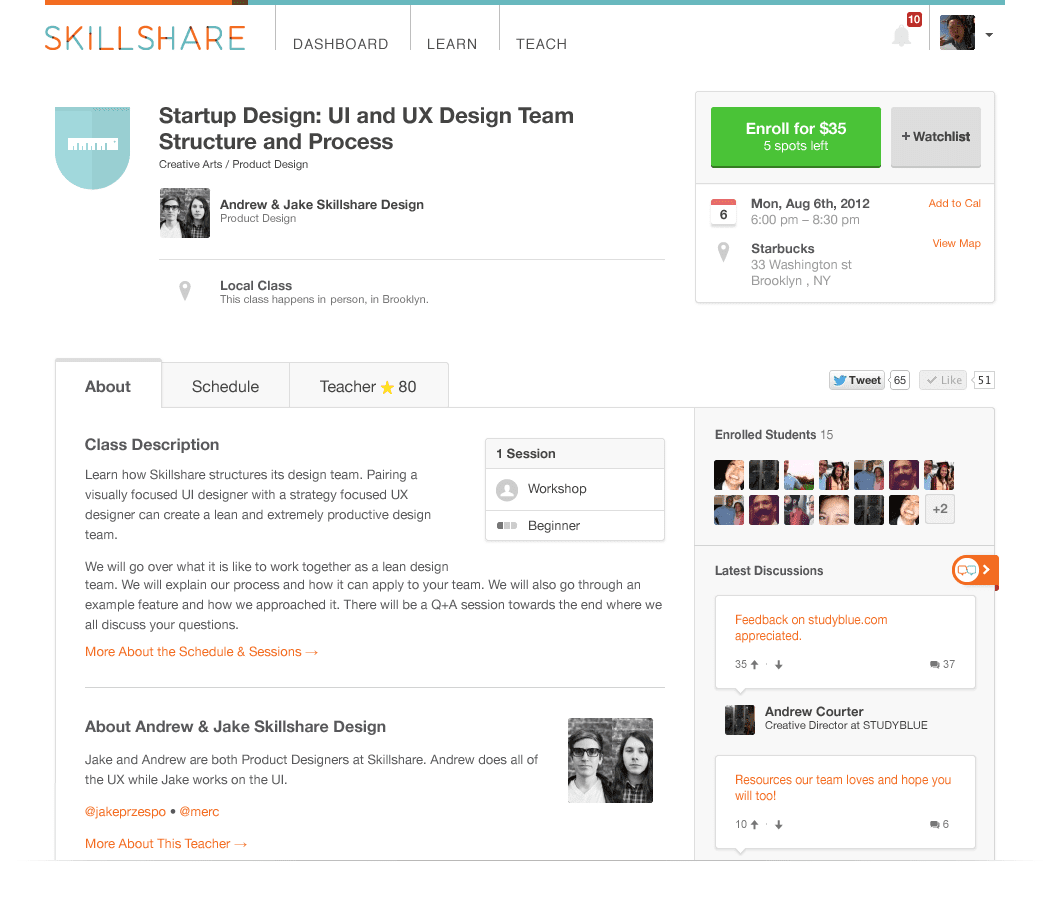
At the time of 2019, Skillshare has over 27,000 premium courses and 2,000+ free courses.
Features of the e-learning platform
Whatever type of e-learning platforms you choose, they have the same must-have features. When building a learning platform MVP first, these features will need to be implemented for the website to work properly.
At the same time, if you want to be a force on the market, you should pay attention to advanced features. Their choice fully depends on your product requirements and boost user experience.
| MVP Features | Advance features |
|---|---|
| Authentication and user profile — registration and the ability to log in as a registered user with a unique profile that can be edited. | Brand Integration — allows you to customize themes and layouts of your courses’ pages to enhance recognition and marketing presence. |
| Filtering — a tool for choosing a convenient search method (manual, keywords, categories) and a filter by price/rating/study time. | Accreditation — accreditation support is important to confirm the real professionalism and prestige of the courses/teachers presented on the platform. Many websites have an automatic accreditation process; otherwise, specialists provide the platform administration with evidence of their qualification, e.g., diploma, certificates, etc. |
| Dashboard — a panel that shows various information about the course to both students and teachers: their progress, rating, traffic, earnings, and so on. | Responsive design features — the ability to access the site from any device, including mobile, and continue learning without losing functionality capabilities. |
| Course page — when you go to the course page, course description, information about a teacher, a list of learning materials, videos, podcasts, chats, and even gamification elements should be displayed there. | Gamification — the ability to add game elements to the educational process for maintaining students’ motivation and engagement. |
| Editing page — a course-building tool with which teachers can edit the course structure and content. | Recommendation System — a mechanism that uses statistical data and AI, which analyzes users’ preferences and interests to provide personalized recommendations. |
| Payment — provides convenient payment options to students and a collection method of earnings to teachers. | Communication Channels — a communication system between students and teachers, including chats, email, social media, etc. |
| Notifications — a system of reminders for users about new courses, updates on diverse activities. | Mobile support — users should be able to take courses anywhere they want via mobile devices. Native app development will require an investment of time and money, while the Hybrid approach will allow you to save significantly, sacrificing the quality of the product. |
| Admin panel — a tool for site administration, including interaction with courses, notification management, and generation of all kinds of reports. | |
| Comments — allows achieving quick and convenient text communication between students and teachers. |
How to start an online learning platform
There are two ways of how you can develop your own elearning platform: from scratch or using a white-label solution. In each case, there are advantages and disadvantages, depending on how you see your project. Let’s look at both ways separately.
White-label solutions
White-label is the type of product that allows you to use existing platforms to create an elearning website. The advantages of this approach are obvious: you save a lot of money and time in contrast to creating a platform from scratch and get a quality product with the ability to modify your brand. This is especially beneficial for content creators, such as teachers or educational institutions, who can easily promote their offer.
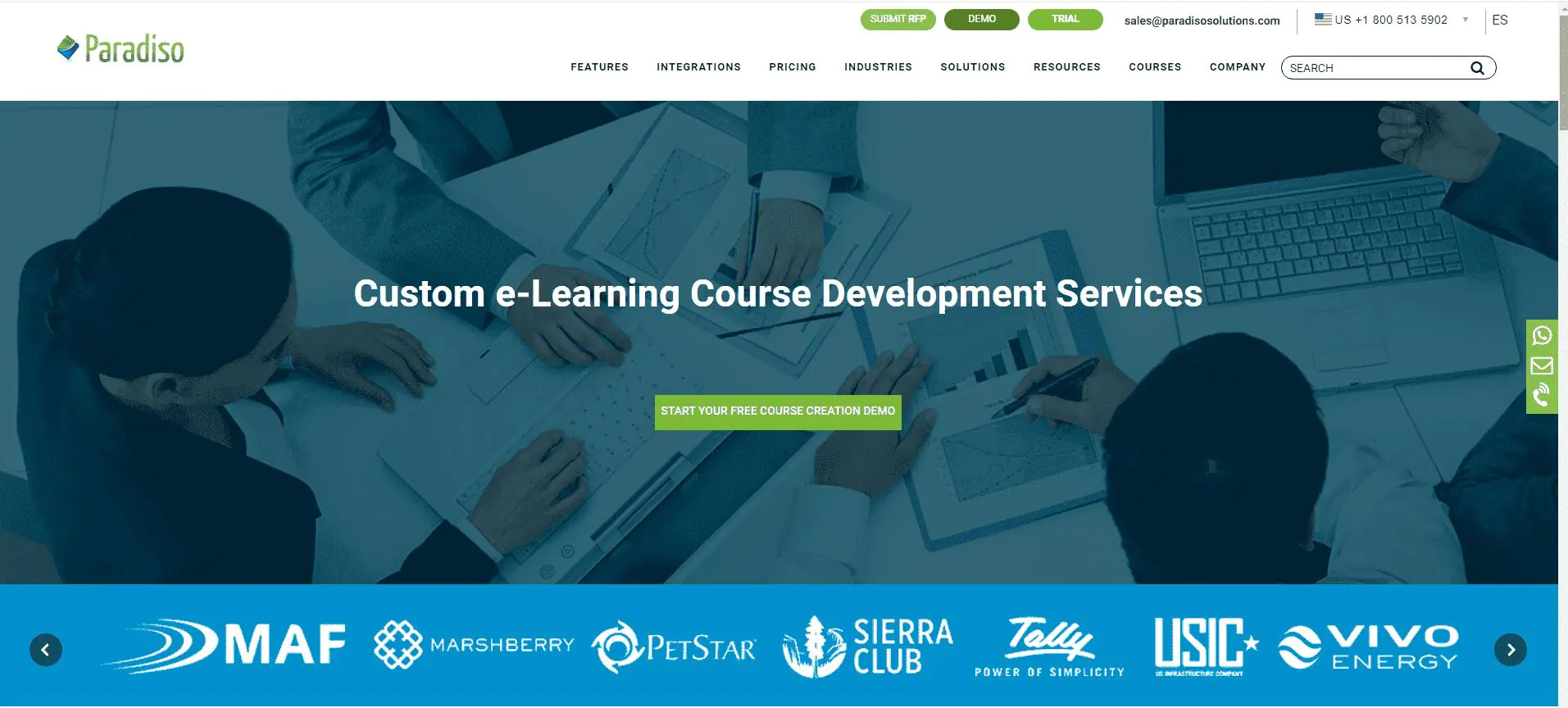
At the same time, the white-label approach will deprive you of most of the control and freedom in managing your business project — you will be forced to obey the rules of the platform you cooperate with and depend on its future changes. Also, the degree of customization may seem insufficient for demanding content-makers because it completely depends on the provided platform tools. You cannot overcome them and create an online learning platform in your own unique way. However, these problems are solved if you choose a different way.
Development from scratch
You can avoid all the problems of white-label solutions if you choose to develop an e-learning platform from scratch, but different kinds of challenges accompany them. Firstly, it is a substantial cost and development time. Secondly, while white-label platforms already have a loyal audience and market visibility, custom solution owners will have to spend more money on advertising and marketing. The generation of users is directly proportional to the earnings of your e-learning platforms.
These drawbacks are wholly leveled by the freedom of customization and complete control over your platform, which are not available in the white-label solution. Accordingly, e-learning website development from scratch is much more complicated and consists of several stages:
Explore your target audience and market situation
So how to build an online learning platform? The first step in creating an e-learning platform should be the audience and competitor research. It will help you create a clear vision of a potentially successful product and prepare a market entry strategy.
When analyzing the audience, please pay attention to the age and interests of potential users, which will help identify the most suitable learning form for them. For example, millennials and zoomers will want to learn with the widespread use of multimedia. Having determined the audience’s desires, you should explore the competitive platforms that managed to attract that segment and analyze how they did it.
The end of this phase will be the compilation of business analysis and technical specifications for your platform. This research can be done for you by the software vendor or a marketing company specializing in this.
Contact a vendor
When choosing a vendor, make sure they have experience in similar projects and successful cases behind by examining their site, portfolio, customer reviews or asking them for more information. This will be a confirmation of its competence in matters of online learning platforms. If you want to save money, pay attention to developers from Eastern Europe, where the most optimal balance between the cost of services and qualifications is maintained. The vendor will help you draw up a Statement of Work (SoW) with all the necessary documentation and technical specifications.
Choose the Business Model
Choosing a business model is one of the most important steps in planning your e-learning platform. A model suitable for your functionality will determine the financial success of the platform for years to come. When you build an e-learning website, look at these most popular types of business models:
| Business Model | Paid Certification | Subscription | Paid Courses | Corporate Collaboration | Affiliate |
|---|---|---|---|---|---|
| Description | The user pays not only for courses but also for the right to receive a verified certificate. | Users buy a monthly or yearly subscription, after which they have unlimited access to the platform content. | The user acquires a course, after which part of the money goes to the teacher and part to the platform’s owner. | A model in which your site collaborates with specific organizations to publish the courses they need to train staff. | The platform contains integrated links to additional learning materials that the user needs to complete their course. When they click on these links and make purchases, your site automatically receives income. |
| Examples | Udemy, Coursera, CodeCademy | Skillshare, Udemy, CodeCademy | Udemy, Coursera | Linkedin Learning, Udemy for Business, Coursera | Kranse Institute, Udemy |
As you can see, it is entirely possible to adhere to one business model or combine several of them.
Choosing tech stack and implementing features
The closer you are to the stage of developing an e-learning site, the more significant is choosing a stack of technologies for it, as well as a set of features that will directly affect the project’s success. The final choice depends entirely on you and the vendor. Meanwhile, we will identify the most appropriate technologies by which e-learning platforms are developed:
| Stage | Technologies |
|---|---|
| Frontend | JavaScript, CSS3, bootstrap |
| Backend | Node.js |
| Framework | Angular.JS/React.JS, Express, Entity Framework |
| Database | MySQL, MongoDB |
| Payment systems | Stripe, Paypal |
| Cloud | AWS, Azure |
UI/UX design
A learner-centered approach should be held as a priority if you want to create a learning platform with good design, which is easy to use. It can be performed by achieving intuitiveness and consistency.
By intuitiveness, we mean easy navigation without second thoughts and questions. It should be made to enable the site users to reach their goals with a minimum number of clicks. To allow users to be guided by their instinct when navigating the site, the design should not distract attention with unnecessary elements. With proper intuitiveness, users will never ask themselves how to open one or another tab. Also, we recommend compressing the images to speed up page loading and limit animations to reduce the load on the page, so users can avoid a negative impression when navigating the site.
Consistency comprises the platform design and color scheme, which form coherence points for achieving optimal attractiveness level. Although this is an educational site, it should not be boring and nondescript: colorful, but not blatant. When choosing colors and illustrations, adhere to the rules of color psychology: for example, use warm colors like red to attract attention and calm ones like blue to create a “balsam for an eye” effect when passing complex material.
Following these tips, the design of your educational site will turn out to be pleasing to the eye and user-friendly without sacrificing a learner-centered focus.
Check out our frontend services
Check out moreDevelopment phase
In this section, we will answer how to build an online learning platform MVP, as it contains the basic functionality inherent for any e-learning product.
During MVP development, you will need to solve a number of problems:
Limited storage capacity
You can solve it by contacting the services of cloud providers such as Amazon (Amazon Web Services) or Google (Google Cloud Platform). This will increase the site’s capacity, provide unlimited data storage, and improve scalability, which is especially crucial due to the high focus on video content widely used on e-learning platforms. Although it will take less time to develop an e-learning website, cloud storage support will require more money in the long run, especially considering its propensity for scaling.
Multiplatform availability
In today’s competitive market for online courses, your product must be available on multiple platforms. To achieve this, you should develop an elearning website on the Angular, React, or Vue.js frameworks that support responsive design. For a full-featured project, it’s better to create separate mobile applications for each platform. In this case, React Native is a perfect option, which will allow you to write hybrid apps for both iOS and Android.
Data theft
Ensuring data theft protection will directly affect the earnings of your site. Therefore, you should pay special attention to this aspect. Online courses deal with a mass of confidential information, both personal and administrative, of many educational organizations. To strengthen security, you need to meet the requirements for the e-learning platforms of access control, authentication, confidentiality, and integrity.
- Authentication will determine the user’s access privileges and prevent the penetration of attackers into the system under other people’s accounts. To maintain security, we recommend that you require re-authentication after some time, control the selection of reliable passwords by users, and implement access control based on roles.
- Access control is implemented during authentication and allows you to perform only those actions that the system allows. To do this, implement the role-based authorization method, which allows you to achieve flexibility in controlling the rights of each user and, accordingly, their actions.
- Confidentiality is provided by access control, data transmission, and storage protection.
- Integrity allows only authorized users to interact with content. Integrity data protection equals data privacy protection in general. One of the best ways to protect data integrity is its replication in multiple places. Also, it is used for disaster recovery, as replication allows you to have a precise data backup in case of system errors or security breaches.
Online piracy
However, data protection is not all that the e-learning platform owner needs to devote significant efforts to. In order to prevent attempts to pirate content on your platform, you should check out some of the most effective anti-piracy methods:
- One of the easiest ways to steal content from your site is to pass the course holder’s password to outsiders. Limiting access options through different devices will stop the distribution of passwords to friends — a student will be able to log in from only one PC and one mobile.
- The introduction of Digital Rights Management (DRM) tools can stop downloading and distribution of paid content. Adding watermarks to images and videos, encrypting videos, and limiting playback capabilities only on licensed players can greatly assist in solving this problem.
- The issue, which has not yet been found the best way to combat with is screen capturing. The best solution remains to be found, but a possible way to counter this is to place users’ personal data on the course page so that they are visible when recording the screen. Then the user will not be able to record content without risking personal information like a verified email or address.
Offline mode implementation
Implementing an offline mode will become very convenient and potentially attractive when a user selects your product. For the successful mode implementation, you will have to write additional code and make decisions on the issues of data sync frequency, its time cycles, the nature of the shared data changes, and the method of syncing. Also, please note that the offline mode implementation for mobile and web differs in technical aspects, which may lead to more development time.
If you want to develop a mobile educational product that will top the lists of AppStore and Google Play, read our article to learn the basics
How much does it cost to build an elearning website?
It is not the best idea to start an online learning platform development without understanding the approximate cost of this process, so in this section, we will calculate how much you will have to pay for an MVP and full-featured e-learning platform. The prices of creating an online course platform are proportional to its functionality and customer desires. For MVP, you will need such fundamental features as:
- Authentication and user profile;
- Filtering;
- Dashboard;
- Course page;
- Editing page;
- Payment;
- Chat;
- Notifications;
- Admin panel.
To implement them, you will need the services of the following specialists:
- 1 Project Manager;
- 2 Backend developer;
- 1 Frontend developer;
- 1 UI/UX designer;
- 1 QA engineer.
When creating a full-featured product, remember that you will have to add additional features to the list:
- Brand Integration;
- Accreditation;
- Responsive design features;
- Gamification;
- Recommendation System;
- Communication Channels.
Business analysis and technical specification are the first steps when you aim to develop a website for elearning. These steps are of particular importance due to the high market competition and will take about 70 and 30 hours for MVP, respectively. UI/UX design of the educational platform involves a lot of work on the simplicity and visual attractiveness of the interface, which will require 60 hours minimum. The frontend and backend MVP development phase will be implemented in 300—400 hours without taking into account additional platforms like iOS/Android. For QA testing, you will have to devote about 20% of the time spent on development.
| Stages | MVP hours ~500—650 | Full feature hours ~1,050—1,450 |
|---|---|---|
| Business analysis | 60—70 | 80—90 |
| Technical specification | 20—30 | 40—50 |
| UI/UX | 60—70 | 90—110 |
| Frontend + Backend development | 300—400 | 700—1,000 |
| QA | 60—80 | 140—200 |
Based on the above hours, we can provide a rough estimate for the online courses platform development. The highest price you will have to pay is in the US and UK. For example, it will cost you from $40,000 to $52,000 for MVP in the US, with approximate $100,000 for a full-fledged product. Western European countries like Germany are not much cheaper, with the price range of $32,500—42,250 for MVP and $ 68,250—94,250 for the end-to-end e-learning platform. Ukraine and other Eastern European countries offer the lowest price for software services while maintaining quality. The cost to develop an MVP starts from $15,000 to $19,500, and the product with full feature set will require investment from $31,500 to $43,500 maximum:
| Country | Average hourly rate | MVP ~500—650 hours | Full feature set~1,050—1,450 hours |
|---|---|---|---|
| USA | $80 | $40,000—52,000 | $84,000—116,000 |
| Western Europe (Germany) | $65 | $32,500—42,250 | $68,250—94,250 |
| UK | $70 | $35,000—45,500 | $73,500—101,500 |
| Eastern Europe (Ukraine) | $30 | $15,000—19,500 | $31,500—43,500 |
Having finished calculating the approximate cost, let’s take a look at how to create an online learning website on our case example.
Our expertise
A few years ago, we were approached by a regular customer from Britain with an e-learning project. We were required to create an online learning platform with a specific set of features. In the beginning, our development team had only a frame for all systems, which consisted of the admin panel, React.js and .Net.
According to the customer’s plan, it had to be a full-fledged white-label platform with all the attendant capabilities: creating and publishing courses, buying them, scheduling, providing roles and permissions, and so on. We took ASP.NET MVC as the basis for the future platform, and we chose Microsoft SQL as the database. Besides, our developers opted for the Entity and Angular.js frameworks.
Development was not without some difficulties. First of all, it is worth highlighting the calculation of orders, whose setup took quite a lot of time due to a large amount of logic inside. This logic had a significant impact on the calculation of internal processes, especially in connection with the constant addition of features from the customer.
The implementation of the SignalR library required an increase in the number of developers. It took plenty of time but has significantly reduced the number of errors and bugs in the project infrastructure.
As a result, our team has successfully managed to build an elearning platform with more than 10,000 users per year actively using the courses.
Conclusion
The secret to a successful e-learning platform lies in interesting and high-quality content, an attractive and practical design, with a solid technical foundation. The current world situation of isolation due to COVID-19 demonstrates the unprecedented relevance of online learning. It is expected that the popularity of digital education will not decline in the future, as it has firmly entered our lives. Do not miss your chance and contact us to create an elearning platform you have always been dreaming about.
FAQ
How to improve an e-learning website’s user experience?
In addition to an elearning website development, we recommend making a mobile app or creating a more responsive website design with an adaptive layout.
What challenges can you face while building an elearning website?
One of the most common challenges when you create your own e-learning platform is storing a large amount of data, which will lead to high costs. To solve this problem, you can use codecs to reduce the size of the data or use limitless storage like AWS.
How to ensure easy integration of your own e-learning website’s additional functionality after the release?
When designing and releasing such a platform, it is very important to provide extensibility for easy integration of new functionality and plugins in the future. Poor extensibility will cause each new feature to cost a substantial amount of money.




